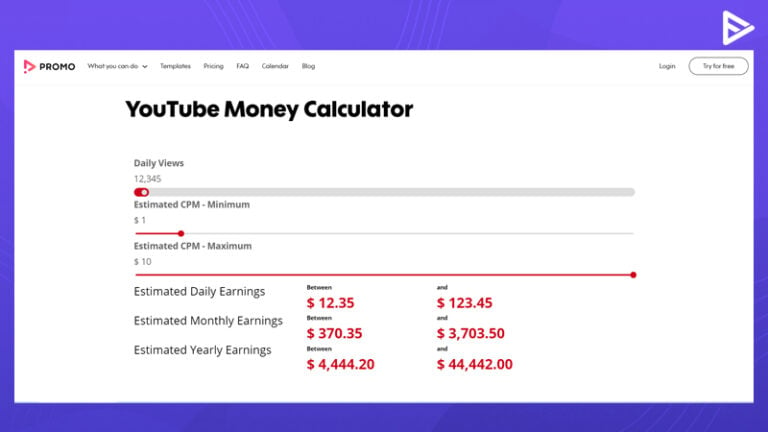Understanding YouTube’s Partner Program: The Key to Earning Money
YouTube’s Partner Program (YPP) is the gateway to monetizing your YouTube channel. To be eligible for the YPP, creators must meet specific requirements, including having at least 1,000 subscribers and 4,000 watch hours in the past 12 months. These requirements ensure that creators have a sizable and engaged audience, which is attractive to advertisers. By meeting these requirements, creators can unlock the potential to earn money from their YouTube videos.
However, simply meeting the requirements is not enough. Creators must also adhere to YouTube’s community guidelines and terms of service. This includes ensuring that their content is high-quality, engaging, and respectful of their audience. Failure to comply with these guidelines can result in penalties, including demonetization or even account suspension.
So, how much do you make per view on YouTube? The answer is not straightforward. Earnings per view vary widely depending on factors such as niche, audience engagement, and advertiser demand. However, by understanding the YPP and adhering to YouTube’s guidelines, creators can set themselves up for success and increase their earning potential.
For example, creators in high-demand niches such as gaming or beauty may earn more per view than those in lower-demand niches. Additionally, creators who produce high-quality, engaging content that resonates with their audience may also earn more per view. By focusing on creating high-quality content and building a loyal audience, creators can increase their earning potential and turn their YouTube passion into a sustainable income.
In the next section, we will explore how YouTube’s algorithm affects earnings and what creators can do to optimize their videos for maximum visibility and engagement.
How YouTube’s Algorithm Affects Your Earnings
YouTube’s algorithm plays a crucial role in determining video visibility, engagement, and ultimately, earnings. The algorithm takes into account various factors, including watch time, click-through rate, and audience retention, to rank videos in search results and recommend them to viewers.
Watch time is a critical factor in YouTube’s algorithm, as it indicates how engaging and relevant a video is to viewers. Videos that keep viewers engaged for longer periods tend to rank higher in search results and earn more ad revenue. Click-through rate (CTR) is another important factor, as it measures the percentage of viewers who click on a video after seeing its thumbnail and title.
Audience retention is also a key factor, as it measures how well a video holds viewers’ attention throughout its duration. Videos that retain viewers’ attention tend to earn more ad revenue, as they are more likely to be watched until the end. Additionally, YouTube’s algorithm takes into account viewer demographics, such as age, location, and interests, to ensure that videos are shown to the most relevant audience.
So, how do these factors impact earnings? Videos that perform well in terms of watch time, CTR, and audience retention tend to earn more ad revenue. For example, a video with a high CTR and watch time may earn more per view than a video with a low CTR and watch time. Additionally, videos that are shown to a highly engaged and relevant audience tend to earn more ad revenue.
Understanding how YouTube’s algorithm affects earnings can help creators optimize their videos for maximum visibility and engagement. By creating high-quality, engaging content that resonates with their audience, creators can increase their earning potential and turn their YouTube passion into a sustainable income.
In the next section, we will explore the role of advertisers and AdSense in YouTube monetization, and how they impact earnings.
The Role of Advertisers and AdSense in YouTube Monetization
Advertisers play a crucial role in YouTube’s monetization ecosystem. They bid on ad space on YouTube, competing with other advertisers to show their ads to the most relevant audience. AdSense, a platform owned by Google, facilitates this process by connecting advertisers with YouTube creators.
When an advertiser bids on ad space, they specify the amount they are willing to pay for each ad click or impression. AdSense then uses this information to determine which ads to display on YouTube videos, based on factors such as ad relevance, viewer demographics, and ad performance.
YouTube creators earn money from AdSense through a cost-per-click (CPC) model. This means that creators earn a portion of the revenue generated by each ad click on their videos. The amount earned per click varies depending on the advertiser’s bid and the ad’s performance.
In addition to CPC, AdSense also uses a cost-per-thousand impressions (CPM) model. This means that creators earn a portion of the revenue generated by each 1,000 ad impressions on their videos. The amount earned per 1,000 impressions varies depending on the advertiser’s bid and the ad’s performance.
So, how much do you make per view on YouTube? The answer depends on various factors, including the niche or topic of your content, audience engagement, and advertiser demand. However, by understanding the role of advertisers and AdSense in YouTube monetization, creators can better navigate the platform and maximize their earnings.
In the next section, we will explore the various factors that influence YouTube earnings per view, including niche or topic, audience engagement, video quality, and viewer demographics.
Factors That Influence Your YouTube Earnings Per View
Several factors can influence your YouTube earnings per view, including niche or topic, audience engagement, video quality, and viewer demographics. Understanding these factors can help you optimize your content and increase your earnings.
Niche or topic is a significant factor in determining earnings per view. Certain niches, such as finance, technology, and health, tend to be more profitable than others. For example, a video about investing in stocks may earn more per view than a video about cooking recipes.
Audience engagement is another crucial factor. Videos that engage viewers and encourage them to watch until the end tend to earn more per view. This can be achieved by creating high-quality, informative, and entertaining content that resonates with your audience.
Video quality is also an important factor. High-quality videos with good production values, sound, and visuals tend to earn more per view than low-quality videos. Additionally, videos that are optimized for mobile devices and have closed captions tend to perform better.
Viewer demographics also play a role in determining earnings per view. Videos that appeal to a specific demographic, such as young adults or parents, may earn more per view than videos that appeal to a broader audience.
Some high-earning niches and topics on YouTube include:
- Gaming: Gaming content has become increasingly popular on YouTube, with many gamers earning significant amounts of money from their videos.
- Beauty and fashion: Beauty and fashion content is highly popular among young adults, and many creators in this niche earn significant amounts of money from their videos.
- Health and wellness: Health and wellness content is highly sought after, and many creators in this niche earn significant amounts of money from their videos.
By understanding these factors and optimizing your content accordingly, you can increase your YouTube earnings per view and turn your passion into a sustainable income.
In the next section, we will explore how to estimate your YouTube earnings and set realistic expectations.
Estimating Your YouTube Earnings: A Realistic Approach
Estimating YouTube earnings can be a complex task, as it depends on various factors such as niche, audience engagement, video quality, and viewer demographics. However, based on industry benchmarks and creator experiences, here are some realistic estimates of YouTube earnings per view.
On average, YouTube creators can earn between $0.50 to $5 per 1,000 views, depending on the niche and audience engagement. However, this amount can vary significantly depending on the specific niche, video quality, and viewer demographics.
For example, creators in the gaming niche can earn up to $10 per 1,000 views, while creators in the beauty and fashion niche can earn up to $5 per 1,000 views. Creators in the health and wellness niche can earn up to $3 per 1,000 views.
It’s also important to note that YouTube takes a 45% cut of the ad revenue, and creators also have to pay taxes on their earnings. Therefore, the actual take-home pay for creators can be significantly lower than the estimated earnings per view.
So, how much do you make per view on YouTube? The answer depends on various factors, and it’s essential to set realistic expectations and not rely solely on YouTube for income. By understanding the factors that influence YouTube earnings and setting realistic expectations, creators can better navigate the platform and maximize their earnings.
In the next section, we will explore actionable tips and strategies for increasing YouTube earnings, such as optimizing video titles, tags, and descriptions, using eye-catching thumbnails, and leveraging social media promotion.
Maximizing Your YouTube Earnings: Tips and Strategies
To maximize your YouTube earnings, it’s essential to optimize your videos for better visibility, engagement, and monetization. Here are some actionable tips and strategies to help you increase your YouTube earnings:
1. Optimize your video titles, tags, and descriptions: Use relevant keywords in your video titles, tags, and descriptions to improve your video’s visibility in search results. This will help you attract more views and increase your earnings.
2. Use eye-catching thumbnails: Create eye-catching thumbnails that grab the attention of your audience and encourage them to click on your video. This will help you increase your click-through rate and earnings.
3. Leverage social media promotion: Promote your YouTube videos on social media platforms like Facebook, Twitter, and Instagram to reach a wider audience and increase your earnings.
4. Engage with your audience: Engage with your audience by responding to comments, answering questions, and creating content that resonates with them. This will help you build a loyal community and increase your earnings.
5. Diversify your income streams: Don’t rely solely on YouTube for income. Diversify your income streams by creating and selling merchandise, offering sponsored content, and affiliate marketing.
6. Use YouTube Analytics: Use YouTube Analytics to track your video’s performance, audience engagement, and earnings. This will help you identify areas for improvement and optimize your content for better monetization.
7. Collaborate with other creators: Collaborate with other creators in your niche to reach a wider audience and increase your earnings.
8. Offer exclusive content: Offer exclusive content to your loyal viewers to encourage them to subscribe to your channel and increase your earnings.
By implementing these tips and strategies, you can maximize your YouTube earnings and turn your passion into a sustainable income.
In the next section, we will summarize YouTube’s monetization policies and emphasize the importance of complying with these policies to avoid account penalties.
YouTube’s Monetization Policies: What You Need to Know
YouTube has strict monetization policies in place to ensure that creators comply with their guidelines and terms of service. Failure to comply with these policies can result in account penalties, including demonetization or even account suspension.
One of the most important policies to understand is the rule around sponsored content. According to YouTube’s policy, creators must clearly disclose sponsored content in their videos, including any product placements or endorsements.
Another important policy to understand is the rule around merchandise sales. Creators are allowed to sell merchandise in their videos, but they must comply with YouTube’s guidelines around affiliate marketing and sponsored content.
YouTube also has strict policies around affiliate marketing. Creators must clearly disclose any affiliate links in their videos, and they must comply with YouTube’s guidelines around sponsored content and product placements.
It’s essential to understand and comply with YouTube’s monetization policies to avoid account penalties and ensure that your channel remains eligible for monetization.
Some key takeaways from YouTube’s monetization policies include:
- Clearly disclose sponsored content in your videos.
- Comply with YouTube’s guidelines around affiliate marketing and merchandise sales.
- Avoid using misleading or deceptive tactics to promote products or services.
- Ensure that your content complies with YouTube’s community guidelines and terms of service.
By understanding and complying with YouTube’s monetization policies, you can ensure that your channel remains eligible for monetization and that you can continue to earn money from your videos.
In the next section, we will conclude our guide to YouTube monetization and offer final thoughts on the potential for YouTube to generate a sustainable income.
Conclusion: Turning Your YouTube Passion into a Sustainable Income
YouTube can be a lucrative platform for creators who are passionate about producing high-quality content and engaging with their audience. However, it’s essential to have realistic expectations and not rely solely on YouTube for income.
To turn your YouTube passion into a sustainable income, focus on producing high-quality content that resonates with your audience. Engage with your viewers by responding to comments, answering questions, and creating content that addresses their needs and interests.
Diversify your income streams by exploring other revenue-generating opportunities, such as affiliate marketing, merchandise sales, and sponsored content. This will help you reduce your dependence on YouTube’s monetization policies and ensure that you can continue to earn money from your content.
Continuous learning is also crucial to success on YouTube. Stay up-to-date with the latest trends, algorithm changes, and best practices to ensure that your content remains relevant and engaging.
So, how much do you make per view on YouTube? The answer depends on various factors, including your niche, audience engagement, video quality, and viewer demographics. However, by following the tips and strategies outlined in this article, you can increase your earnings and turn your YouTube passion into a sustainable income.
Remember, success on YouTube requires patience, persistence, and creativity. By focusing on producing high-quality content, engaging with your audience, and diversifying your income streams, you can unlock the secrets to YouTube monetization and turn your passion into a sustainable income.







